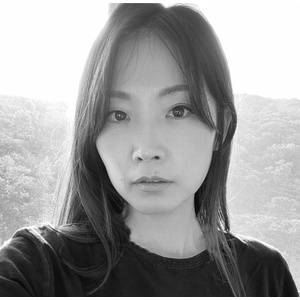The PacificVis Storytelling Contest celebrates its sixth year in 2022. The purpose of this contest is to encourage students, researchers, and visualization practitioners to demonstrate the value of visualization through effective visual data storytelling, as a way to promote innovative and effective use of visualization for communicating and explaining ideas.
This contest is inspired by trends in data storytelling, narrative visualizations, explanatory visualizations, and visual essays. Potential contest entrants are encouraged to review the following events and venues for inspiration.
- The Tapestry Conference
- The Information is Beautiful Awards
- The Malofiej Infographics World Summit
- The Pudding
- NYT Graphics
- Explorable Explanations
- Entries from previous contests (2017-2021): link
Accepted works in 2021:
- Yanru Lyu, Juanjuan Long, Rui Wang, Juan Ni, Ning Wang, Shuangyan Wang, Storytelling with Natural Ecological Data
- Xingyu Lan, Yueyao Zhang, Jiati Liang, Siukay Ye, The Evolution of Putian Network
- Juanjuan Long, Junlin Zhu, Wei Zhou, Rui Wang, Guide to Chinese Musical Relics in Hunan
- Yangyang Zhu, Suwen Li, Wei Zhou, Tiemeng Li, The Universe of Mental Health in Tech Company
- Wanjun Zhang, Xin Huang, Song Anqi, Qiansheng Li, The Secret of Tu Embroidery’s Heritage
- Yuqing Lei, Beilei Hu, Yuhao Chen, Zhen He, Qinxuan Wu, Qiansheng Li, Visual Exploration of Public Art Construction in Shanghai
As well as the following papers:
- Narrative Visualization: Telling Stories with Data (Segel and Heer, IEEE InfoVis 2010)
- Storytelling: The Next Step for Visualization (Kosara and Mackinlay, IEEE Computer 2013)
- Visualization Rhetoric: Framing Effects in Narrative Visualization (Hullman and Diakopoulos, IEEE InfoVis 2013)
- Understanding Data Videos: Looking at Narrative Visualization Through the Cinematography Lens (Amini et al., ACM CHI 2015)
- More than Telling a Story: Transforming Data into Visually Shared Stories (Lee et al., IEEE CG&A 2015)
And videos:
- Once Upon a Time: From Data to Stories (John Schwabish @ Socrata Connect 2017)
- Animation, Pacing, and Exposition (Tony Chu @ OpenVisConf 2016)
- Where’s Larry? Bringing Data to Life Through Story (Cole Nussbaumer Knaflic @ Tapestry Conference 2017)
PacificVis is a unified visualization symposium, welcoming all areas of visualization such as information, scientific, graph, security, and software visualization. Storytellers are invited to submit visual data-driven stories that draw upon any of these areas. In addition, entries that focus on computational journalism and artistic design projects are encouraged. Unlike contests such as the VAST challenge or the SciVis Contest, the data for the PacificVis visual data storytelling contest is intentionally left unspecified; storytellers are free to choose any publicly available dataset(s). Similarly, the task that storytellers are to accomplish is to successfully communicate a message or series of messages (i.e., a narrative, a series of insights) using visualization techniques and supported by the underlying data. The themes of the story can draw from any topic, including current affairs, history, natural disasters, and research findings from the sciences and humanities.
Entries may be submitted by teams or individuals, and from both industry and academia alike. Conference sponsors can participate non-competitively. Submissions must fulfill the requirements explained below.
Requirements
Submissions can take several forms:
Images: A collection of images, charts, infographics, data comics, and/or data visualization that convey a story using engaging visual designs. Example 1 and Example 2
Video: An animation that tells a data-driven story using visualizations. Note that video submissions that appear to be tutorials or demonstrations of a visualization tool will not be considered; the focus of the submission must be a visual narrative about the data, not a visualization tool or technique. Example
Notebooks: Interactive articles, markups, and notebooks that guide the reader through a narrative using text and visualizations. Examples of explainable notebook platforms include Distill, Idyll, and Observable.
Website: An interactive web page that guides the user through the story. Note that purely analytic or exploratory visualization tools/dashboards that do not provide guidance or storytelling to the user will not be considered. The winning entry in the 2017 contest is an excellent example of a website entry: link.
Unconventional Forms: Other forms of interactive storytelling work, such as virtual/augmented reality, mixed reality, and other audio-visual projects, are also encouraged to submit as well. A video is likely the best way to do the initial submission. For unconventional entries that are accepted, we will work with the artists/authors to decide the best possible way to exhibit the work at the conference.
Other requirements:
The story must feature visual representation of data generated by various techniques such as computer programming (e.g., D3.js), manual illustration (e.g., using pen & paper, physical objects, or illustration software) or other relevant techniques. Third party techniques or applications may be used in conjunction with the authors’ own work as long as proper credit is given to their respective creators and it is made clear which aspects of the implementation represent the authors’ own work.
The entries must be original data-driven stories that have not been previously published elsewhere.
The dataset(s) used in the story must be publicly available, and linked to, sourced, or otherwise referenced.
The story content can be in any language while accompanying explanations should be provided in English. This will help our judges provide a proper evaluation of your submission.
A 150-word abstract (entered on the PCS submission website) that may briefly describe the purpose of the story along with the data analysis and design process undertaken by the storyteller(s). The abstract should not include the message(s) communicated by the story; the story must stand alone in this regard such that a viewer should not need to read the abstract to understand the story.
Supplementary materials are encouraged. For example, high-resolution images, videos, audio files or other materials to show design processes that will help reviewers evaluate the submission.
For the accepted entries we expect the following additional requirements:
-
A brief demo video describing the submission. (Exact details will be sent out to accepted entries.)
-
At least one member of the team must register for the conference and be present at the contest’s sessions and award ceremony.
Submission
Submit online through the new Precision Conference System at the PacificVis 2022 Storytelling Contest track.
Static entries such as infographics and data comics should be submitted in PDF format. Videos should be in mp4 format, with a maximum file size of 300 MB. Explainable articles and websites can be submitted as a web URL. Such entries should be directly runnable in a browser without having to download or install packages/libraries/etc.
If you have chosen to submit a URL (i.e., a website submission or an online version of your video or image submission), please add the URL in the abstract field.
Important Dates
| Dates | |
|---|---|
| Submission deadline | January 25, 2022 |
| Notification date | February 15, 2022 |
| Camera ready submission | March 1, 2022 |
All dates are due at midnight PST (Pacific Standard Time).
Reviewing and Awards
A jury of visualization and data storytelling experts will carefully judge each submission and make the selection of accepted entries. Successful entries will effectively communicate a narrative, message(s), or insight(s) using visual representations of data. Each judge assigned to a submission will give the submission a score from 1 to 5, and they will be asked the following questions:
- Is the story novel?
- Is the story original (i.e, author’s own work and not previously published elsewhere)?
- Is the story trustworthy and functional (i.e., the message clearly communicated)?
- Is the story engaging and beautiful?
- Is the story informative and enlightening?
- Are the submission requirements met?
Accepted submission will be published on the PacificVis Storytelling Contest channel on Vimeo. A selected set of accepted entries will receive awards (Honorable Mention and Best Storytelling Awards). Awards will be presented to the winners during the conference.
Jury
| Name | Affiliation |
|---|---|
| Oh-Hyun Kwon | Apple |
| Fritz Lekschas | Ozette |
| Charles Perin | University of Victoria |
| Donghao Ren | Apple |
| Hyemi Song | University of Maryland |
| Alice Thudt | Freelance Visualization Designer |
| Krist Wongsuphasawat | Airbnb |
Contact
For questions regarding the contest, please do not hesitate to contact the chairs directly via pvis_contest@pvis.org.
Chairs
Chairs

Yoon Chung Han
San Jose State University, USA

Nam Wook Kim
Boston College, USA
